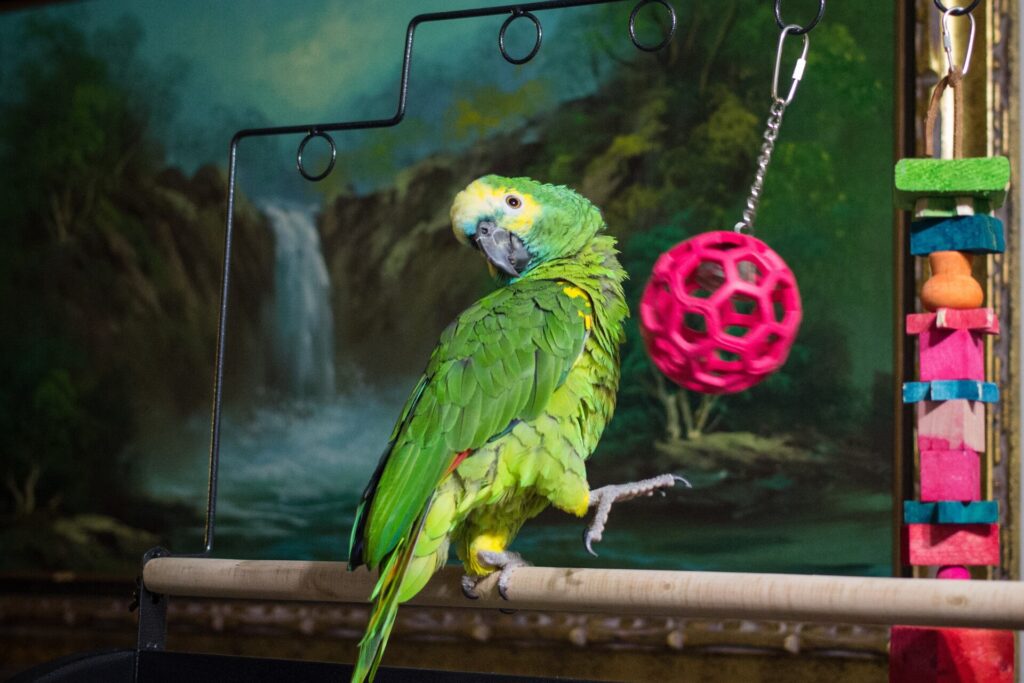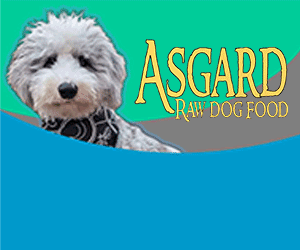It’s the same words muttered by so many companion bird families at this time of year. “My sweet bird has turned into a velociraptor! What did I do to make them so angry?”
For over 25 years, I have bred various species of cockatoos, macaws, and amazons. One of the greatest challenges in educating the public regarding these birds is the understanding of hormonal insurgence at various times of the year.
Before I go any further, it is important to understand that this is a natural process for birds to experience. It usually manifests between the ages of 5 and 12 years of age. During this time, there can be a period where the bird is overly aggressive. This aggression lessons over time and tends to minimize in severity over future hormonal seasons. Many bird families are at a loss for how to deal with these sudden changes in temperament. This is when many families decide that maybe their beloved pet no longer fits within their family unit. As a result, many bird rescues are inundated with various species of “sexually mature” parrots that are deemed aggressive or manifesting unacceptable behaviors such as screaming and biting.
Let’s try to see this issue through the eyes of our feathered friends. In the wild, a parrot at this age (5-12 years) would have most likely already paired with a mate. They would spend their days foraging for food, guarding a nest, and making babies. In our homes, birds do not have these options. And a growing issue that many avian specialists are seeing now, is the insurgence of hormonal aggression in hand fed parrots when they come of age.
Over the last twenty or so years, hand feeding parrots has become the normal way of rearing young parrots here in the United States. (In some countries, it is illegal to hand rear birds.) During hand feeding, the baby bird goes through a process that is called “IMPRINTING.” During this time, the baby bird learns through feeding to associate and bond with humans. They essentially identify humans as their “flock” so to speak. Once the baby parrots have weaned, they are then placed into homes that tend to lavish them with attention. (Everyone loves a snugly baby bird.) It is at this time they bond with their newly found “flock.” This bond can become strong with a particular family member. The bird may essentially be picking a mate or “pair bonding.” And obviously, this choosing will not be fruitful.
During the first few years of the bird being in its new home, the attention given to the bird can program them to accept the person as their mate. And then suddenly, the day comes when the hormonal drive to produce young changes the sweet disposition of your bird. Why does this happen? It goes without saying that a bird picking a human as its mate cannot produce offspring. Therefore, the bird experiences a great deal of frustration. The drive to produce offspring is so great, the bird cannot understand why it’s “mate” shows no signs of interest. The frustration can manifest as screaming, biting, and other aggressive behaviors. To understand ways to curtail these behaviors, we first need to identify what triggers hormonal activity.
Extended Hours of Light natural or artificial can cause the reproductive organs to enlarge. Thus , triggering the release of hormones and eagerness to breed. The Availability of a Nest or object that can be utilized as a nest. This can include cardboard boxes or even pillows from a living room couch. Availability of a mate: Can be you, another bird or object such as a toy. Diet: A nutrient dense diet high in fats/proteins and starches. This can trigger “ABUNDANCE RESPONSE.”
Inappropriate (sexual) petting: This includes a bird’s backside or vent and under the bird’s wings.
Identifying hormonal signals:
- Increased sexual responses when petted. (Especially inappropriate areas.
- Feather plucking. Mostly on chest and in between legs
- Frequent regurgitation of food, panting, and crouching down with wings extended
- Increased shredding of paper and toys. Increased chewing
- Nest building. Or hiding in dark areas searching for a potential nest site
- Aggression and or possession of a potential nest site
- Possessiveness of favorite person or another bird. Demonstrating aggression toward others
- Increased vocalization
- Females increase food intake of calcium such as cuttlebone and protein rich foods
- Masturbation
How to intervene when a bird is displaying hormonal behaviors.
ONE OF THE MOST EFFECTIVE TECHNIQUES YOU CAN UTILIZE WHEN DEALING WITH A HORMONAL BIRD IS HAVING THEM TRAINED TO STEP UP ONTO A STICK OR T-PERCH. Stick training allows you to be able to move your bird from one point to another without having to come into direct contact. Thus, decreasing your chances of being bitten. Other ways to intervene include:
1. Decrease the length of “light” time. (8-20 hours).
2. Increase exercise by encouraging foraging. Foraging is an effective way to keep birds busy.
3. Adjust their diet by not offering foods high in fats and proteins.
4. Remove any potential nest sites.
5. Offer various toys and methods of foraging that will redirect hormonal responses.
6. Avoid petting or stroking your bird inappropriately. Petting in these designated areas can solicit sexual interest. Another way to intervene is chemically. There are various products on the market that can be administered to your bird that can lessen the hormonal responses; however, I personally feel that these should be used as a last resort when all other methods have been exhausted. In closing, it is important to understand that hormonal episodes in sexually mature parrots is a natural process. However, it is equally important that the bird family recognize that their daily interactions with their bird can either contribute to or lesson the hormonal responses. I hope that this article helps in some way to identify the triggers and provide you with the tools to redirect hormonal responses.
BIO
Edward R. Moats has been an Avian Specialist and successful breeder or various species of parrots for over 25 years. He owned and operated a successful aviary known as “Pittsburgh Parrotlets” until 2015, when he decided to devote his efforts to parrot rescue and educating the public on the proper care of companion birds. His work has appeared in various avian magazines such as “The Linnie Ledger”, “Parrot Society U.K.”, and “P.E.A.R.L. Parrot Rescue” monthly newsletter. Along with chairing as the Vice President of PEARL Parrot Rescue, he is also an accomplished writer and blogger on various Facebook pages such as “Pittsburgh Parrots” and “Pittsburgh Parrotlets.” His work is also showcased on the website: WWW.pearlparrots.com



